Mikhail Chigorin - The Rise of Russia

Mikhail Chigorin
There were a few great players from it's sphere of influence, such as the Prussian, Johannes Zukertort for instance. But no Russian masters competing against the game's greatest.
Chigorin popularized the game in his homeland by firstly going up against the greatest players in the world and holding his own with his remarkably creative playing style.
Secondly he circulated a number of chess magazines around the country. And thirdly he initiated the Soviet School of Chess which took off not long after his death.
Young Mikhail
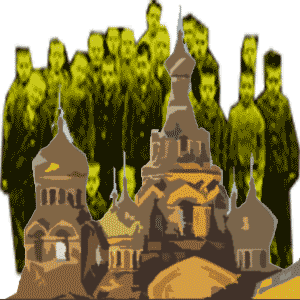
Mikhail Chigorin was orphaned at a young age
Not much is known of Chigorin's very early years. His family seems to have been working class, not especially well off. Major upheaval was on it's way for Mikhail.
He lost both of his parents at a young age. None of his relatives could take him in. Unfortunately that meant he would have to go to an orphanage.
The Gatchinsk Orphans Institute

Mikhail Chigorin grew up in an orphanage similar to this one
The atmosphere had a traumatic effect on many of the kids that went through the system. Many would be effected into their adulthood. Chigorin certainly was.
He would become a nervous, irritable eccentric that found it difficult to bond with the people around him. He did have one plus in his years there. One of his schoolteachers taught him to play chess when he was 16. He would later become devoted to the game.
Swapping Government for Caissa
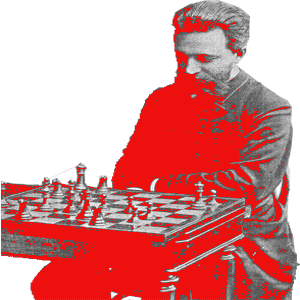
Mikhail Chigorin quit his government post to devote his life to chess
He was developing a strategy built on closing positions by interlocking pawn shells and making pawns static by doubling them and blocking them and so on.
He began to master the art of dominating these kinds of positions by creating havoc with his Knights. He would often exchange his Bishops for his opponent's Knights, then make the enemy Bishops ineffective or bad by closing them in behind their own pawns.
His Knights would dance their way to good posts in the enemy camp. He was especially talented in finding good tactics in such games and all of this was the key to his success.
Climbing the Russian Mountain

Mikhail Chigorin quickly rose to the summit of Russian chess
His dominance beyond St Petersburg followed and soon he was the #1 player in the whole country. He was head and shoulders above every player in the Russian Empire.
He had to look for competition in the wider world in order to keep improving. The European continent was the hotbed of world chess and soon Chigorin would be competing in cities the length and breadth of it as he took on the best players in the world.
International Glory
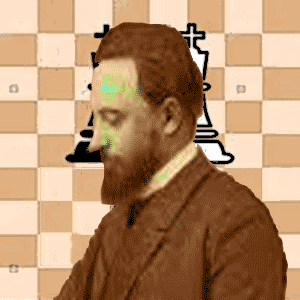
Mikhail Chigorin quickly became one of the best players in the world
He again did well in London 1883, finishing 4th behind Zukertort, Steinitz and Blackburne.
The 1880s saw a string of impressive showings. When he finished equal 1st with Weiss in the New York 1889 tournament he had done enough to get a World Championship shot at William Steinitz. Zukertort had passed away and Blackburne was well past his heyday. Chigorin was the strongest challenger.
World Championship Challenges
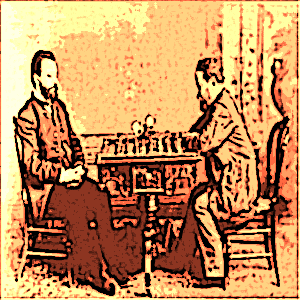
Mikhail Chigorin twice challenged William Steinitz for the World Championship
With the death of Zukertort, the Romantic purists searched around for an old school hero who would rescue chess from the grinding and crushing of the mechanical Steinitz. They hoped they'd found him in Chigorin.
The Havana Chess Club offered Steinitz terms for a World Championship match against a challenger of his choosing in 1889. Chigorin was the man. He had overcome all others and had a good record against Steinitz in tournament play.
The champion had a point to prove. And he proved it. The match was set to run for a maximum of 20 games, with Steinitz needing at least 10 points. He had to draw or win to retain the title. Chigorin needed at least 10.5. He had to win outright to become champion. Steinitz won 10.5 - 6.5, needing only 17 games.
Chigorin had proved himself worthy of the opportunity however with this strong showing. Steinitz defended successfully in 1890-91 against Gunsberg. When it was time for him to defend again in 1892, Chigorin was again considered the strongest challenger. The Russian would get another shot. The Havana Chess Club again hosted and Steinitz won another close encounter 12.5 - 10.5.
Finest Hour at Hastings
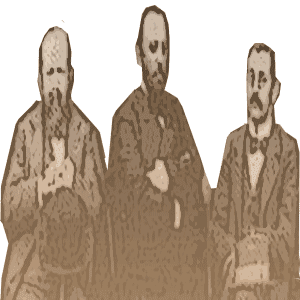
Mikhail Chigorin finished 2nd at Hastings 1895, pictured here flanked by William Steinitz, left and Emanuel Lasker, right
More and more, finance was being sourced to bring the very best players in the world together to compete in super tournaments. Hastings 1895 was the biggest one to date.
Chigorin, Albin, Schlechter, Janowski, Marco, Blackburne, Maróczy, Schiffers, Gunsberg, Burn, Tinsley, Vergani, Steinitz, Lasker, Pillsbury, Tarrasch, Mieses, Teichmann, von Bardeleben, Mason, Walbrodt and Bird competed for a place in history. Harry Nelson Pillsbury, unknown in Europe, surprisingly won on a score of 16.5/22. Chigorin finished 2nd on 16/22.
Legacy of Chigorin
The highly tactical Chigorin Defense - 1.d4 d5 2.c4 Nc6
The other is the Chigorin Defence to the Queen's Gambit: 1.d4 d5 2.c4 Nc6. This is a novel way to treat this opening as Black usually plays for the advance ...c5 and 2...Nc6 seems to block this.
Chigorin did more than most to remind us that the relative strengths of the Bishop and Knight owe much to the fighting arena they find themselves in. While the Bishop is certainly superior in open positions, the Knight can be better in closed positions featuring static pawn chains, islands or other elements that generally limit activity and mobility.
And let us not forget, perhaps more important than anything, Chigorin was the father of Russian chess. He did much to bring about the Soviet School of Chess that would make the USSR the leading chess nation for much of the 20th Century.
Moving On
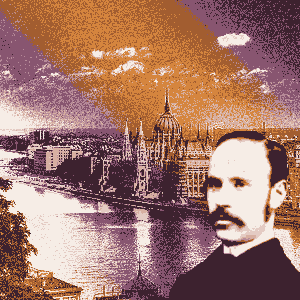
Isidor Gunsberg
He enjoyed neutralizing the opposing Bishops by denying them the space and open country they crave. He created an environment catering to his Knights. His Knights, in these closed positions, would time and again outmaneuver and dominate the enemy Bishops.
His ingenious tactics brought him within a whisker of the World Championship on two occasions. Another great master of this age to suffer the same fate against the might of Steinitz was the Hungarian, Isidor Gunsberg.






